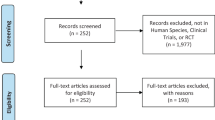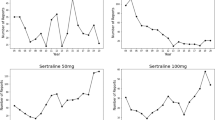Abstract
Prior literature has suggested that finasteride may negatively impact men’s sexual health. In 2011, the Food and Drug Administration (FDA) provided a warning on finasteride drug labels to incorporate sexual side effects such as reduced libido and erectile dysfunction. We aimed to evaluate global online interest in finasteride sexual side effects, their penetrance and variation, and how they compared overtime. We also aimed to evaluate the influence of the FDA label warnings on web-based searches for finasteride side effects. We utilized Google search engine from January 2004 to December 2020 to include separate trends from web searches of “Propecia,” “Propecia side effects,” “finasteride”, “finasteride side effects”, and “post-finasteride syndrome” compared amongst the United States, United Kingdom, and Australia. We performed join-point regression analysis. We compared the annual relative search volume (ARSV) and annual percentage change (APC) to evaluate for loss or gain of interest in the respective key terms. We determined that the average ARSV for “finasteride” was 14.8% in 2004 and increased significantly to 57.3% in 2020 (APC: +9.25%, 95% CI 8 to 10.5, p < 0.001). Likewise, there was significant increased interest in “finasteride side effects” (APC: +20.7, p < 0.001) and “post-finasteride syndrome” (APC: +29.2; p < 0.001) in the United States overtime. Finally, when we compared trends before and after the FDA warnings, the average ASRV of “finasteride”, “finasteride side effects”, and “post-finasteride syndrome” all increased significantly (p = 0.001, p = 0.014, p < 0.001), respectively. Thus, it is evident that there is a global web-based interest in finasteride and its sexual health side effects, particularly after the FDA warning in 2011. There is boosted public awareness, and thus providers should have more detailed and careful conversations with patients prior to starting a 5α-reductase inhibitor such as finasteride.
This is a preview of subscription content, access via your institution
Access options
Subscribe to this journal
Receive 8 print issues and online access
$259.00 per year
only $32.38 per issue
Buy this article
- Purchase on Springer Link
- Instant access to full article PDF
Prices may be subject to local taxes which are calculated during checkout


Similar content being viewed by others
Data availability
The data that support the findings of this study are available in Google Trend. These data were derived from the following resources available in the public domain: https://trends.google.com/trends/?geo=US.
References
Prescribing Information: PROSCAR (finasteride). 2013. https://www.accessdata.fda.gov/drugsatfda_docs/label/2014/020180s044lbl.pdf.
Kane SP Finasteride—Drug Usage Statistics, ClinCalc DrugStats Database. 2021. https://clincalc.com/DrugStats/Drugs/Finasteride.
Zito PM, Bistas KG, Syed K. Finasteride. Treasure Island (FL): StatPearls; 2022.
Leyden J, Dunlap F, Miller B, Winters P, Lebwohl M, Hecker D, et al. Finasteride in the treatment of men with frontal male pattern hair loss. J Am Acad Dermatol. 1999;40:930–7.
Drugs@FDA. FDA-Approved Drugs. 2021. https://www.accessdata.fda.gov/scripts/cder/daf/index.cfm?event=overview.process&ApplNo=020180.
Lim KB. Epidemiology of clinical benign prostatic hyperplasia. Asian J Urol. 2017;4:148–51.
Busetto GM, Giovannone R, Antonini G, Rossi A, Del Giudice F, Tricarico S, et al. Short-term pretreatment with a dual 5alpha-reductase inhibitor before bipolar transurethral resection of the prostate (B-TURP): evaluation of prostate vascularity and decreased surgical blood loss in large prostates. BJU Int. 2015;116:117–23.
Gupta AK, Quinlan EM, Williams KL. The shifting preferences of patients and physicians in nonsurgical hair loss treatment. J Cosmet Dermatol. 2021;20:929–36.
Traish AM. Health Risks Associated with Long-Term Finasteride and Dutasteride Use: It’s Time to Sound the Alarm. World J Mens Health. 2020;38:323–37.
Kuehn BM. Prostate, baldness drugs linked to sexual dysfunction. JAMA. 2012;307:1903.
Mella JM, Perret MC, Manzotti M, Catalano HN, Guyatt G. Efficacy and safety of finasteride therapy for androgenetic alopecia: a systematic review. Arch Dermatol. 2010;146:1141–50.
FDA Drug Safety Communication: 5-alpha reductase inhibitors (5-ARIs) may increase the risk of a more serious form of prostate cancer: FDA. 2011. https://www.fda.gov/drugs/drug-safety-and-availability/fda-drug-safety-communication-5-alpha-reductase-inhibitors-5-aris-may-increase-risk-more-serious.
Turner E, Rainie L. Most Americans rely on their own research to make big decisions, and that often means online searches. Pew Research. 2021. https://www.pewresearch.org/fact-tank/2020/03/05/most-americans-rely-on-their-own-research-to-make-big-decisions-and-that-often-means-online-searches/.
Fox S, Duggan M. Peer-to-Peer Health Care. Pew Internet. 2013. https://www.pewresearch.org/internet/2013/01/15/information-triage/.
Bussey LG, Sillence E. The role of internet resources in health decision-making: a qualitative study. Digit Health. 2019;5:2055207619888073.
Cajita MI, Whitehouse E, Budhathoki C, Hodgson N. Association between Internet use and decision-making preference in older adults. Gerontechnology. 2016;14:97–104.
Clayman ML, Gulbrandsen P, Morris MA. A patient in the clinic; a person in the world. Why shared decision making needs to center on the person rather than the medical encounter. Patient Educ Couns. 2017;100:600–4.
Johnson J. Search engine market share worldwide. Statista. 2021. https://www.statista.com/statistics/216573/worldwide-market-share-of-search-engines/.
Nuti SV, Wayda B, Ranasinghe I, Wang S, Dreyer RP, Chen SI, et al. The use of google trends in health care research: a systematic review. PLoS ONE. 2014;9:e109583.
Google Trends. Google. 2021. https://trends.google.com/trends/?geo=US.
Russo GI, di Mauro M, Cocci A, Cacciamani G, Cimino S, Serefoglu EC, et al. Consulting “Dr Google” for sexual dysfunction: a contemporary worldwide trend analysis. Int J Impot Res. 2020;32:455–61.
Kim JH, Baek MJ, Sun HY, Lee B, Li S, Khandwala Y, et al. Efficacy and safety of 5 alpha-reductase inhibitor monotherapy in patients with benign prostatic hyperplasia: a meta-analysis. PLoS ONE. 2018;13:e0203479.
Del Giudice F, Kasman AM, Ferro M, Sciarra A, De Berardinis E, Belladelli F, et al. Clinical correlation among male infertility and overall male health: a systematic review of the literature. Investig Clin Urol. 2020;61:355–71.
Traish AM. Post-finasteride syndrome: a surmountable challenge for clinicians. Fertil Steril. 2020;113:21–50.
Stone BV, Forde JC, Levit VB, Lee RK, Te AE, Chughtai B. Trends in internet search activity, media coverage, and patient-centered health information after the FDA safety communications on surgical mesh for pelvic organ prolapse. Int Urogynecol J. 2016;27:1761–6.
Agree EM, King AC, Castro CM, Wiley A, Borzekowski DL. “It’s got to be on this page”: age and cognitive style in a study of online health information seeking. J Med Internet Res. 2015;17:e79.
Author information
Authors and Affiliations
Contributions
Conceptualization: KA and GEC. Methodology: KA and GEC. Formal Analysis: KA. and GEC. Writing—original draft: KA, TS, MKS, and GEC. Writing—reviewing, and editing: KA, TS, MKS, and GEC. Supervision: GEC and MKS.
Corresponding author
Ethics declarations
Competing interests
The authors declare no competing interests.
Additional information
Publisher’s note Springer Nature remains neutral with regard to jurisdictional claims in published maps and institutional affiliations.
Rights and permissions
Springer Nature or its licensor holds exclusive rights to this article under a publishing agreement with the author(s) or other rightsholder(s); author self-archiving of the accepted manuscript version of this article is solely governed by the terms of such publishing agreement and applicable law.
About this article
Cite this article
Asanad, K., Sholklapper, T., Samplaski, M.K. et al. Global online interest in finasteride sexual side effects. Int J Impot Res (2022). https://doi.org/10.1038/s41443-022-00612-1
Received:
Revised:
Accepted:
Published:
DOI: https://doi.org/10.1038/s41443-022-00612-1



